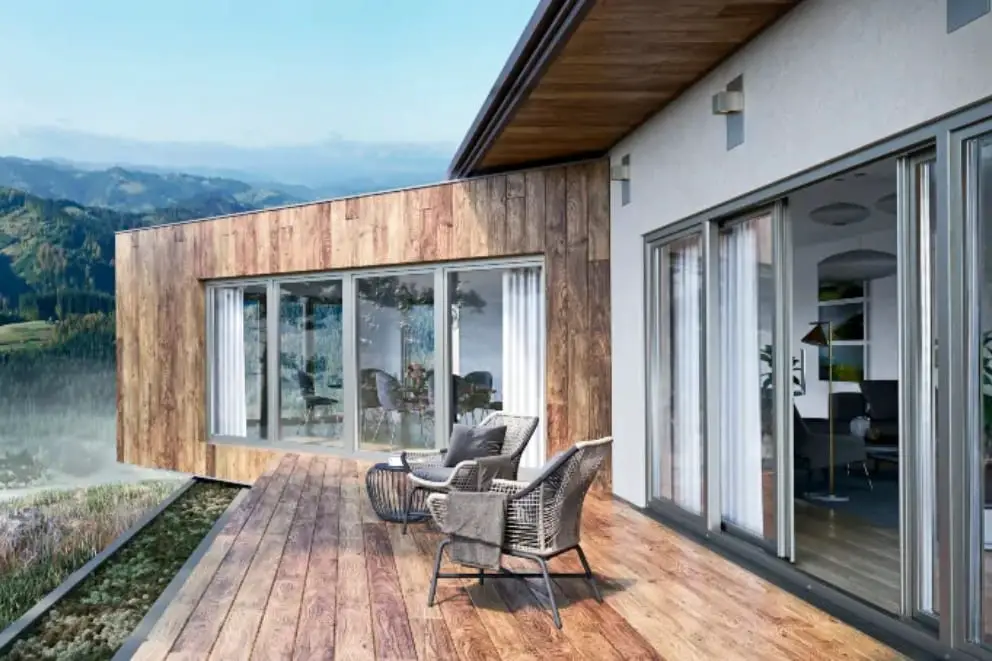As we navigate through 2024, the evolving landscape of front home design reflects broader cultural shifts and technological advancements. This year, architects and designers are increasingly focusing on sustainability, smart technology integration, and personalization, setting new benchmarks in the aesthetics and functionality of residential architecture.
Sustainable Materials and Green Building Practices
Sustainability is no longer just a buzzword but a crucial element in modern home design. Architects are prioritizing eco-friendly materials that not only reduce environmental impact but also offer long-term cost savings and durability. For instance, the use of recycled steel and reclaimed wood not only lends a unique aesthetic appeal but also significantly lowers the carbon footprint of new constructions.
In addition to materials, green building certifications like LEED and BREEAM are becoming standard, with homeowners increasingly aware of their benefits. These certifications ensure that homes are energy-efficient, have lower water usage, and provide healthier living environments through improved indoor air quality.
Integration of Smart Home Technology
Technological integration into home design has shifted from a luxury to a necessity. In 2024, front home designs are seamlessly incorporating advanced technologies that enhance security, comfort, and convenience. Smart locks, high-tech surveillance systems, and integrated IoT ecosystems are just the beginning.
These technologies not only provide enhanced security but also offer homeowners unprecedented control over their living environments. For example, smart thermostats and lighting systems can be adjusted remotely, ensuring energy efficiency and reducing utility bills.
Personalization and Flexibility
As lifestyles become more dynamic, the need for adaptable living spaces has intensified. Architects are responding by designing homes that can easily be customized to meet changing family needs. Movable walls, adjustable lighting, and modular furniture are key features that allow residents to reconfigure their spaces effortlessly.
Moreover, personalization extends to the aesthetic elements of home design. Homeowners now have more options than ever to personalize their front façade with a variety of textures, colors, and materials. From traditional brickwork to modern metallic panels, the choices are both diverse and accessible.
Outdoor Living and Connectivity
With a growing appreciation for nature and outdoor activities, front home designs are increasingly focusing on creating a seamless flow between indoor and outdoor spaces. Large glass doors and windows not only enhance natural lighting but also provide a visual connection to the outdoor living areas, which are now as important as the interiors.
Landscaping also plays a crucial role in today’s front home designs. Sustainable landscaping with native plants and water-efficient gardens not only enhances the home’s curb appeal but also contributes to the local ecosystem.
Cultural Influences and Global Trends
The globalization of design has introduced a myriad of cultural influences into front home architecture. In 2024, we see a blend of architectural elements from around the world, creating unique and diverse façade designs. This global influence is evident in the use of patterns, colors, and textures that reflect a wide range of cultural traditions, making each home not just a structure but a storytelling canvas.
Conclusion
The trends in front home design for 2024 are clear indicators of a broader shift towards more sustainable, smart, and personalized living spaces. As technology and cultural influences continue to evolve, so too will the ways in which we design and interact with our living environments. These trends not only enhance the aesthetic appeal of homes but also improve functional efficiency and sustainability, promising a brighter future for residential architecture.


